Daniela Lanz
Scalable Lossless Coding of Dynamic Medical CT Data Using Motion Compensated Wavelet Lifting with Denoised Prediction and Update
Feb 03, 2023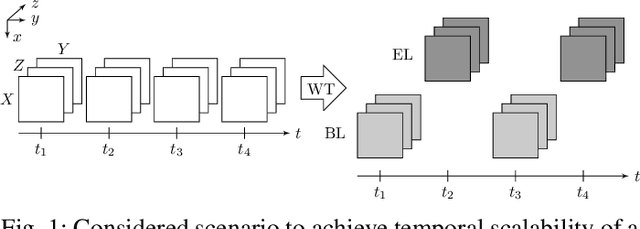
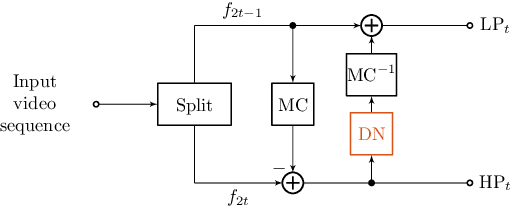
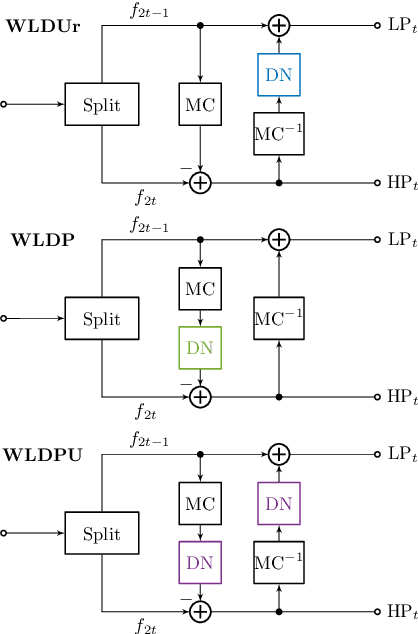

Abstract:Professional applications like telemedicine often require scalable lossless coding of sensitive data. 3-D subband coding has turned out to offer good compression results for dynamic CT data and additionally provides a scalable representation in terms of low- and highpass subbands. To improve the visual quality of the lowpass subband, motion compensation can be incorporated into the lifting structure, but leads to inferior compression results at the same time. Prior work has shown that a denoising filter in the update step can improve the compression ratio. In this paper, we present a new processing order of motion compensation and denoising in the update step and additionally introduce a second denoising filter in the prediction step. This allows for reducing the overall file size by up to 4.4%, while the visual quality of the lowpass subband is kept nearly constant.
Graph-Based Compensated Wavelet Lifting for Scalable Lossless Coding of Dynamic Medical Data
Feb 03, 2023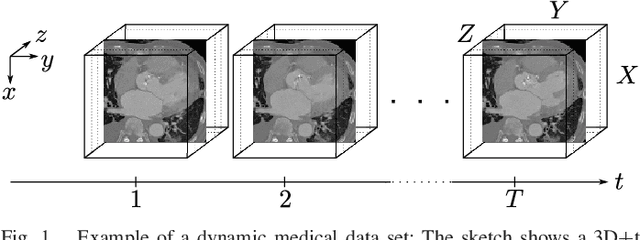

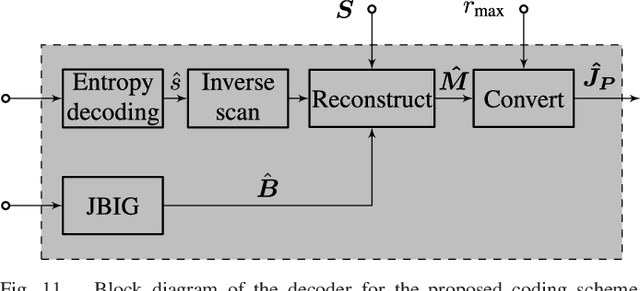

Abstract:Lossless compression of dynamic 2D+t and 3D+t medical data is challenging regarding the huge amount of data, the characteristics of the inherent noise, and the high bit depth. Beyond that, a scalable representation is often required in telemedicine applications. Motion Compensated Temporal Filtering works well for lossless compression of medical volume data and additionally provides temporal, spatial, and quality scalability features. To achieve a high quality lowpass subband, which shall be used as a downscaled representative of the original data, graph-based motion compensation was recently introduced to this framework. However, encoding the motion information, which is stored in adjacency matrices, is not well investigated so far. This work focuses on coding these adjacency matrices to make the graph-based motion compensation feasible for data compression. We propose a novel coding scheme based on constructing so-called motion maps. This allows for the first time to compare the performance of graph-based motion compensation to traditional block- and mesh-based approaches. For high quality lowpass subbands our method is able to outperform the block- and mesh-based approaches by increasing the visual quality in terms of PSNR by 0.53dB and 0.28dB for CT data, as well as 1.04dB and 1.90dB for MR data, respectively, while the bit rate is reduced at the same time.
Content Adaptive Wavelet Lifting for Scalable Lossless Video Coding
Feb 02, 2023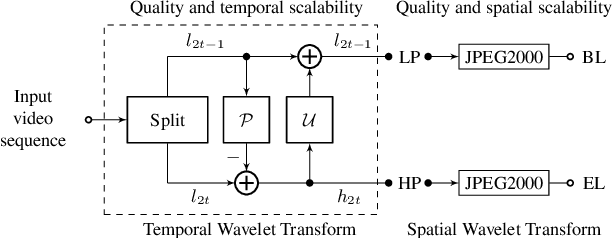
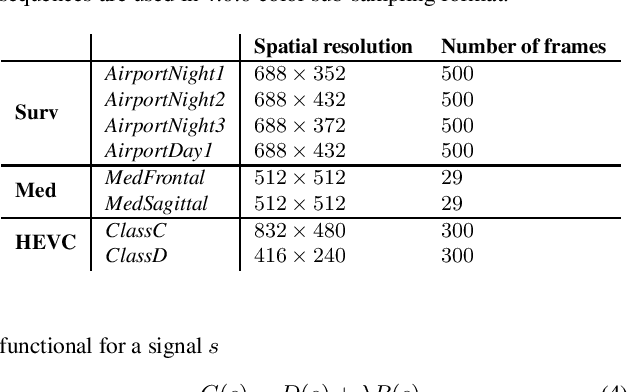
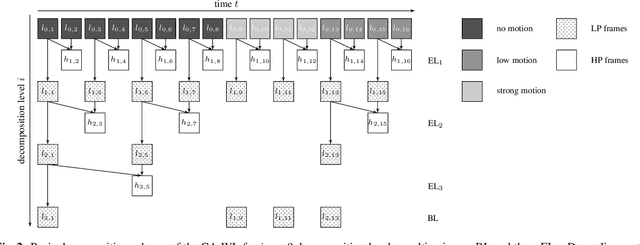
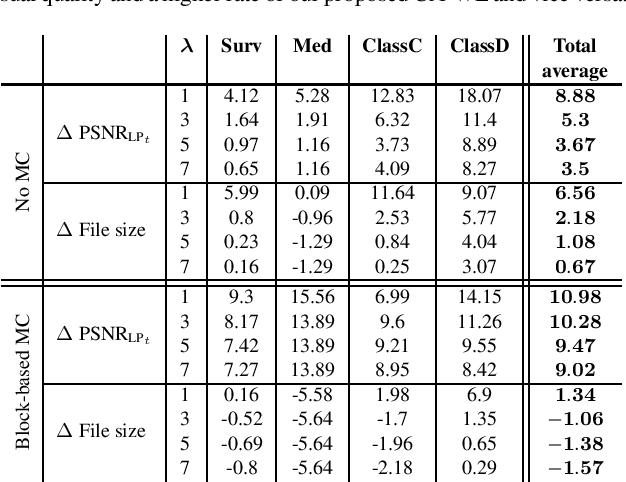
Abstract:Scalable lossless video coding is an important aspect for many professional applications. Wavelet-based video coding decomposes an input sequence into a lowpass and a highpass subband by filtering along the temporal axis. The lowpass subband can be used for previewing purposes, while the highpass subband provides the residual content for lossless reconstruction of the original sequence. The recursive application of the wavelet transform to the lowpass subband of the previous stage yields coarser temporal resolutions of the input sequence. This allows for lower bit rates, but also affects the visual quality of the lowpass subband. So far, the number of total decomposition levels is determined for the entire input sequence in advance. However, if the motion in the video sequence is strong or if abrupt scene changes occur, a further decomposition leads to a low-quality lowpass subband. Therefore, we propose a content adaptive wavelet transform, which locally adapts the depth of the decomposition to the content of the input sequence. Thereby, the visual quality of the low-pass subband is increased by up to 10.28 dB compared to a uniform wavelet transform with the same number of total decomposition levels, while the required rate is reduced by 1.06% additionally.
Compression of Dynamic Medical CT Data Using Motion Compensated Wavelet Lifting with Denoised Update
Feb 02, 2023



Abstract:For the lossless compression of dynamic 3-D+t volumes as produced by medical devices like Computed Tomography, various coding schemes can be applied. This paper shows that 3-D subband coding outperforms lossless HEVC coding and additionally provides a scalable representation, which is often required in telemedicine applications. However, the resulting lowpass subband, which shall be used as a downscaled representative of the whole original sequence, contains a lot of ghosting artifacts. This can be alleviated by incorporating motion compensation methods into the subband coder. This results in a high quality lowpass subband but also leads to a lower compression ratio. In order to cope with this, we introduce a new approach for improving the compression efficiency of compensated 3-D wavelet lifting by performing denoising in the update step. We are able to reduce the file size of the lowpass subband by up to 1.64\%, while the lowpass subband is still applicable for being used as a downscaled representative of the whole original sequence.
Optimizing Rate-Distortion Performance of Motion Compensated Wavelet Lifting with Denoised Prediction and Update
Feb 02, 2023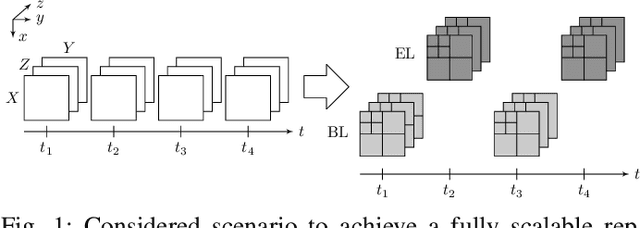
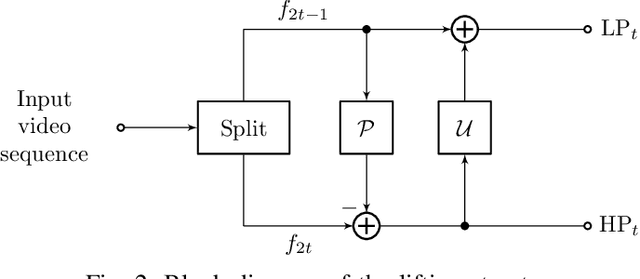
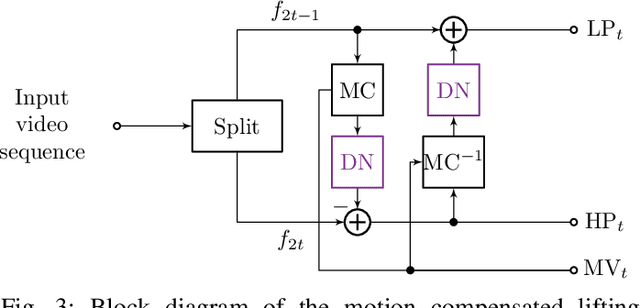
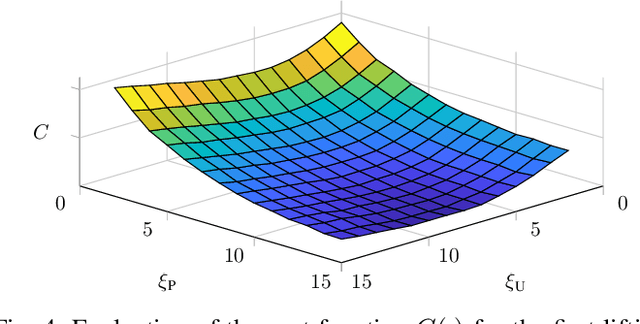
Abstract:Efficient lossless coding of medical volume data with temporal axis can be achieved by motion compensated wavelet lifting. As side benefit, a scalable bit stream is generated, which allows for displaying the data at different resolution layers, highly demanded for telemedicine applications. Additionally, the similarity of the temporal base layer to the input sequence is preserved by the use of motion compensated temporal filtering. However, for medical sequences the overall rate is increased due to the specific noise characteristics of the data. The use of denoising filters inside the lifting structure can improve the compression efficiency significantly without endangering the property of perfect reconstruction. However, the design of an optimum filter is a crucial task. In this paper, we present a new method for selecting the optimal filter strength for a certain denoising filter in a rate-distortion sense. This allows to minimize the required rate based on a single input parameter for the encoder to control the requested distortion of the temporal base layer.
Graph-based compensated wavelet lifting for 3-D+t medical CT data
Jan 12, 2023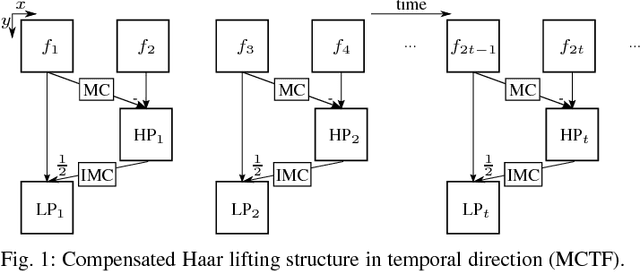

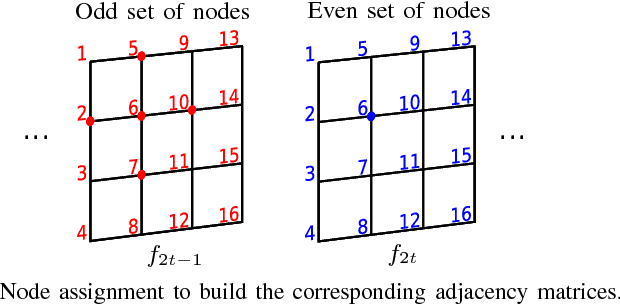
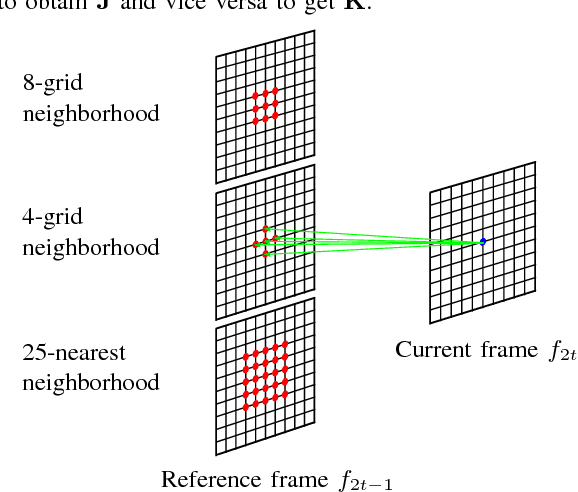
Abstract:An efficient scalable data representation is an important task especially in the medical area, e.g. for volumes from Computed Tomography (CT) or Magnetic Resonance Tomography (MRT), when a downscaled version of the original signal is needed. Image and video coders based on wavelet transforms provide an adequate way to naturally achieve scalability. This paper presents a new approach for improving the visual quality of the lowpass band by using a novel graph-based method for motion compensation, which is an important step considering data compression. We compare different kinds of neighborhoods for graph construction and demonstrate that a higher amount of referenced nodes increases the quality of the lowpass band while the mean energy of the highpass band decreases. We show that for cardiac CT data the proposed method outperforms a traditional mesh-based approach of motion compensation by approximately 11 dB in terms of PSNR of the lowpass band. Also the mean energy of the highpass band decreases by around 30%.
Improving mesh-based motion compensation by using edge adaptive graph-based compensated wavelet lifting for medical data sets
Jan 12, 2023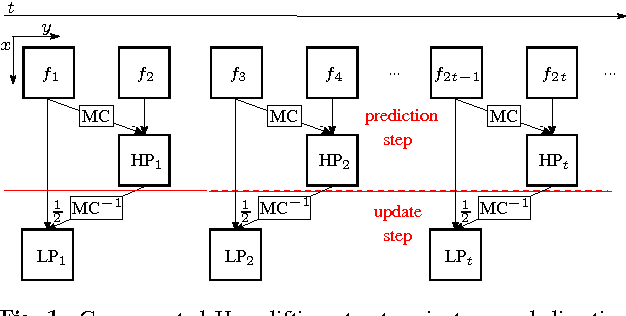

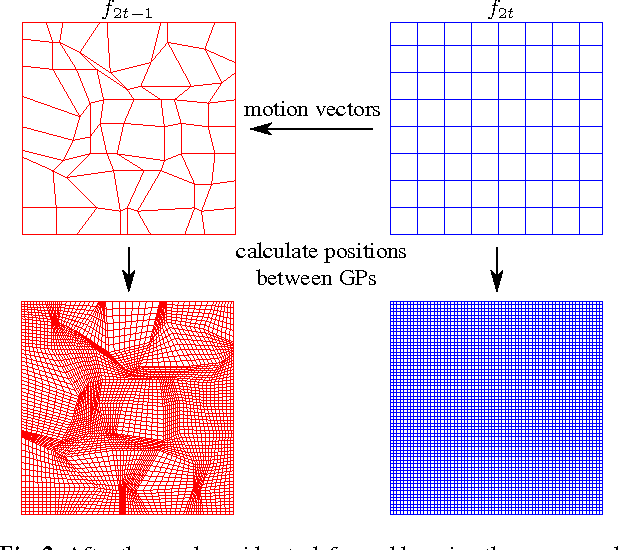
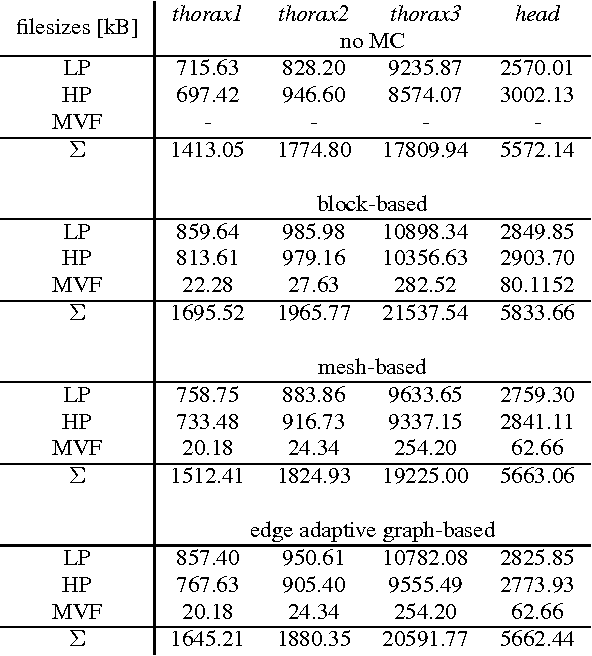
Abstract:Medical applications like Computed Tomography (CT) or Magnetic Resonance Tomography (MRT) often require an efficient scalable representation of their huge output volumes in the further processing chain of medical routine. A downscaled version of such a signal can be obtained by using image and video coders based on wavelet transforms. The visual quality of the resulting lowpass band, which shall be used as a representative, can be improved by applying motion compensation methods during the transform. This paper presents a new approach of using the distorted edge lengths of a mesh-based compensated grid instead of the approximated intensity values of the underlying frame to perform a motion compensation. We will show that an edge adaptive graph-based compensation and its usage for compensated wavelet lifting improves the visual quality of the lowpass band by approximately 2.5 dB compared to the traditional mesh-based compensation, while the additional filesize required for coding the motion information doesn't change.
Dynamic Non-Regular Sampling Sensor Using Frequency Selective Reconstruction
Apr 07, 2022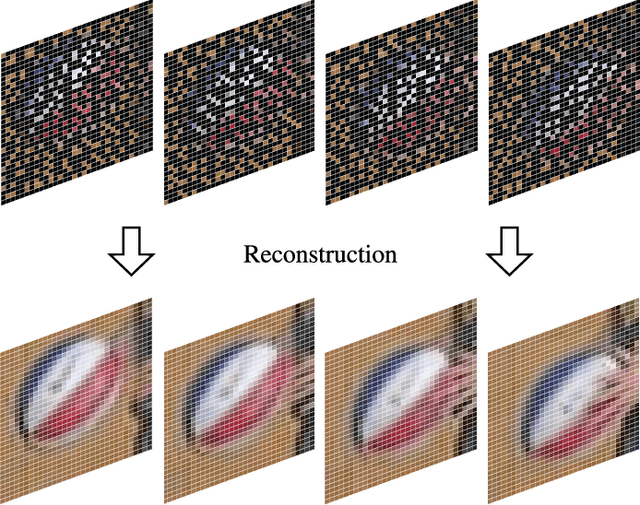
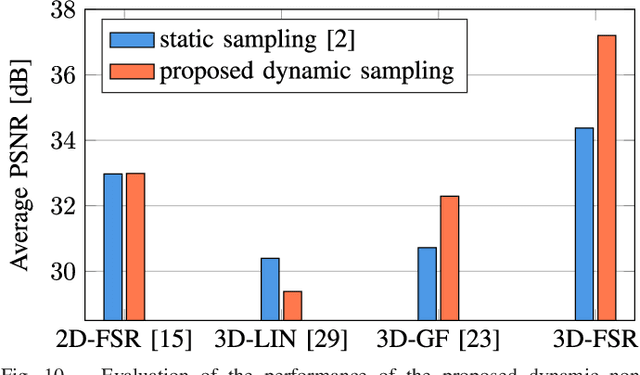
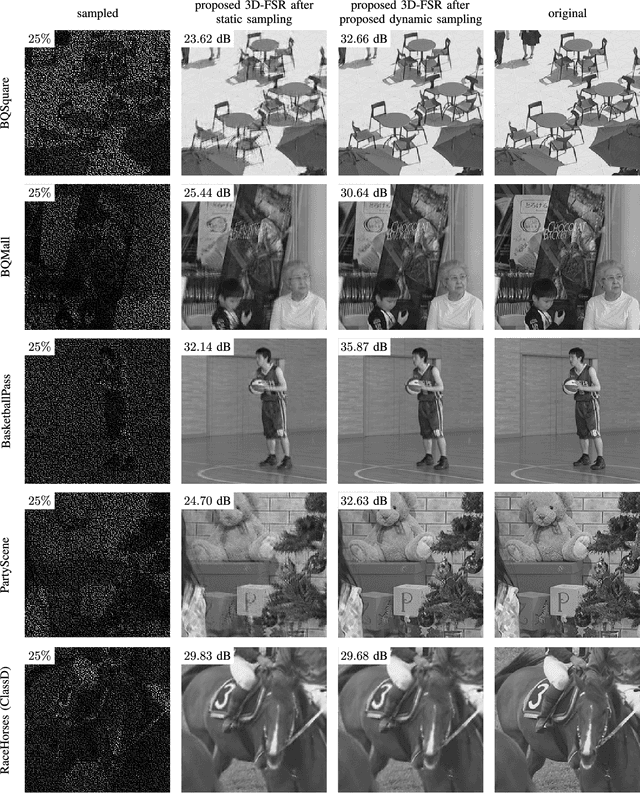
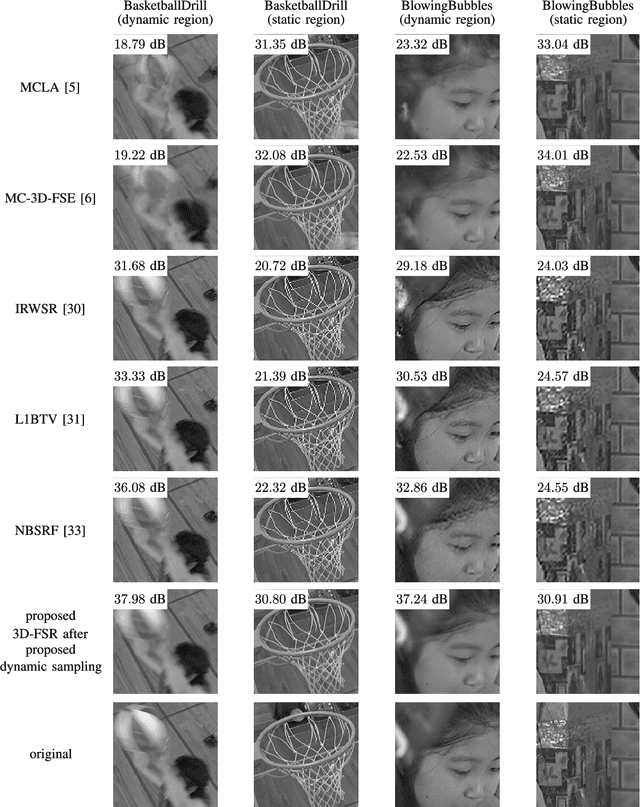
Abstract:Both a high spatial and a high temporal resolution of images and videos are desirable in many applications such as entertainment systems, monitoring manufacturing processes, or video surveillance. Due to the limited throughput of pixels per second, however, there is always a trade-off between acquiring sequences with a high spatial resolution at a low temporal resolution or vice versa. In this paper, a modified sensor concept is proposed which is able to acquire both a high spatial and a high temporal resolution. This is achieved by dynamically reading out only a subset of pixels in a non-regular order to obtain a high temporal resolution. A full high spatial resolution is then obtained by performing a subsequent three-dimensional reconstruction of the partially acquired frames. The main benefit of the proposed dynamic readout is that for each frame, different sampling points are available which is advantageous since this information can significantly enhance the reconstruction quality of the proposed reconstruction algorithm. Using the proposed dynamic readout strategy, gains in PSNR of up to 8.55 dB are achieved compared to a static readout strategy. Compared to other state-of-the-art techniques like frame rate up-conversion or super-resolution which are also able to reconstruct sequences with both a high spatial and a high temporal resolution, average gains in PSNR of up to 6.58 dB are possible.
 Add to Chrome
Add to Chrome Add to Firefox
Add to Firefox Add to Edge
Add to Edge